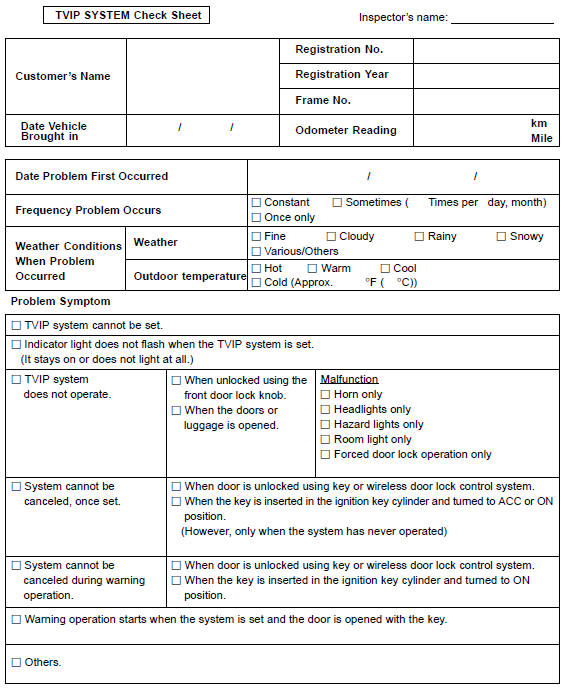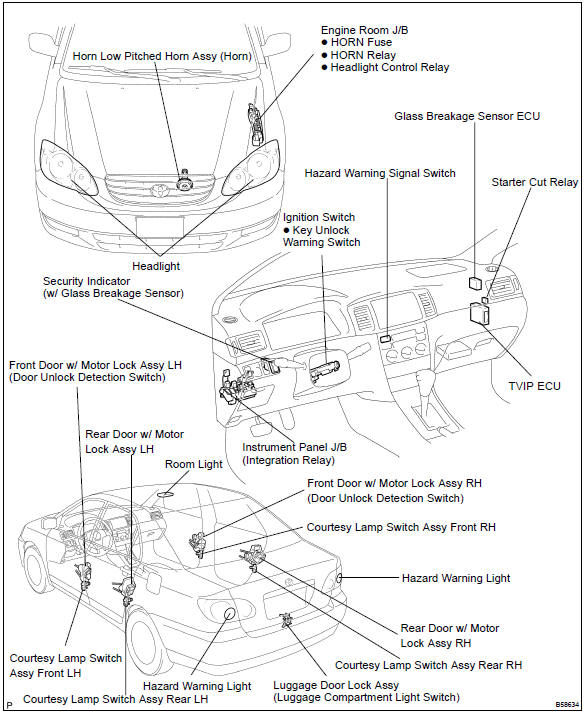Toyota Corolla (E120) 2002–2008 Repair Manual / Diagnostics / Toyota vehicle intrusion protection system / How to proceed with troubleshooting
Toyota Corolla (E120): How to proceed with troubleshooting
Troubleshoot in accordance with the procedure on the following pages.
1 Vehicle brought to workshop

2 Customer problem analysis check and symptom check
- Without applicable symptoms, proceed to ”a”.
- with applicable symptoms, proceed to ”b”.


3 Symptom simulation

4 Problem symptoms table
- Without applicable symptoms, proceed to ”a”.
- with applicable symptoms, proceed to ”b”.


5 Circuit inspection and part inspection

6 Perform troubleshooting in the following method, depending on malfunction symptom
- Terminals of ecu (seepage 05–703)
- on–vehicle inspection
7 Adjustment, repair or replacement

8 Confirmation test

End
Customer problem analysis check

Location

Other materials:
RCTA function
■ Operation of the RCTA function
The RCTA function uses rear side radar sensors to detect vehicles
approaching from the right or left at the rear of the vehicle and alerts
the driver of the presence of such vehicles by flashing the outside
rear view mirror indicators and sounding a buzzer.
Appr ...
Shifting the shift lever to R
Shift the shift lever to R while lifting up the ring section.
■Maximum allowable speeds
Observe the following maximum allowable speeds in each gear when maximum acceleration
is necessary.
mph (km/h)
NOTICE
■To prevent damage to the transmission
●Do not lift up the ring ...
USB charging port (if
equipped)
The USB charging port are used
to supply 3.0 A of electricity at 5
V to external devices.
The USB charging port are for
charging only. They are not
designed for data transfer or
other purposes.
Depending on the external
device, it may not charge properly.
Refer to the manual
included with the dev ...


